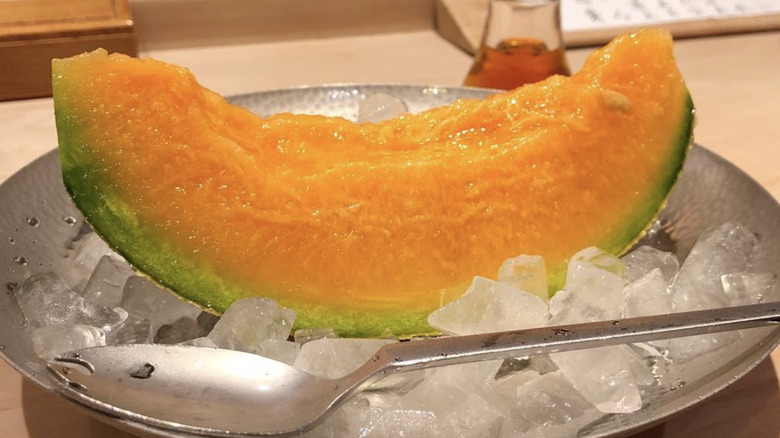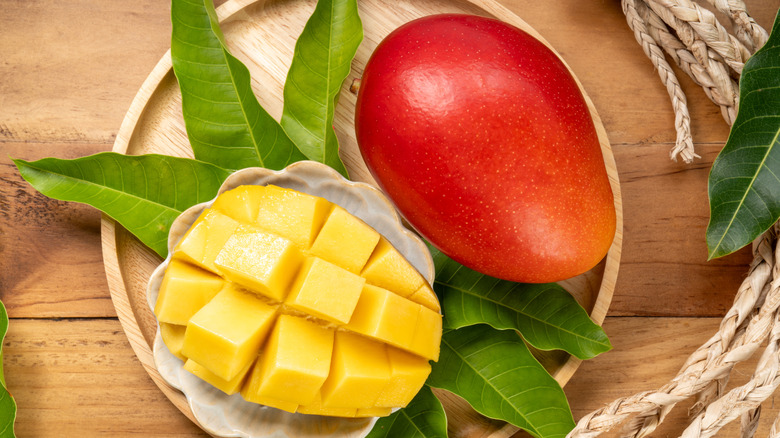Why Fruit Often Comes With A High Price Tag In Japan
Japan is famous for its fruits — and how costly those fruits can be. To those unfamiliar, fruits in Japan can seem unreasonably expensive, in some cases equalling or even exceeding what one would dish out for a meal at a fancy restaurant. There are several reasons why fruits in Japan have a high price tag, and these include their cultural significance, as well as their superior quality, and the nation's high farming standards.
In Japanese culture, fruits are viewed more as high-end gifts rather than everyday produce or nutritious snacks. It's common for guests to carry fruits as "temiyage" (gifts given to the host when invited to their house), or for travelers to bring them back as "omiyage" (souvenirs from visiting another place). They are presented as tokens of gratitude, thoughtfully picked, and presented to make a good impression, and even wrapped up and gifted during the holiday seasons.
Regardless of the occasion, fruits are deemed one of the most appropriate gifts in Japan. One reason for this is the practicality of it. Fruits are a gift that can be consumed without the worry about them sitting in a corner in someone's house and occupying unnecessary space. Plus, gifting fresh, in-season fruits is emblematic of the cultural significance that Japan places on the changing of its seasons. Furthermore, fruit giving is a time-honored Japanese practice. It has been around since the 14th century and was popular even among samurai.
These are some of the most expensive fruits in Japan
The craftsmanship that goes into producing these luxury-level fruits plays a large role in their expense. Some Japanese fruits are not treated like everyday produce; they are engineered to become culinary specimens. The majority of farmers in Japan operate at a small scale, ensuring the produce gets all of their attention. Fruits are meticulously grown using laborious methods and special techniques to allow for the best flavor, texture, and appearance. This style of farming produces small crop yields, which further drives up the cost.
Take the expensive Yubari King melons, for example. In 2023, a pair of them sold for approximately $25,000. Grown in carefully controlled environments in Northern Japan, these melons are treated with the utmost care and attention. Each melon gets its own hat for shade from the sun, and is wiped each day by farmers. The result is a buttery, juicy melon renowned for its sweetness. Japanese mangoes are also extremely expensive, especially the ones from Miyazaki Prefecture. Due to its bright reddish-orange, sun-kissed color and vibrant orange-yellow flesh, the Miyazaki mango is dubbed "Egg of the Sun." For a Miyazaki mango to be labeled as such, it must weigh at least 350 grams and have a sugar content of 15% or above. The resulting fruit melts in your mouth and leaves a sweet taste behind.
Similarly, satsuma mandarin oranges from Southern Japan's Ehime Prefecture are famous for their sweet flavor and juicy texture. In 2020, a buyer in Japan purchased a crate of oranges for $9,600 at a wholesale auction.

